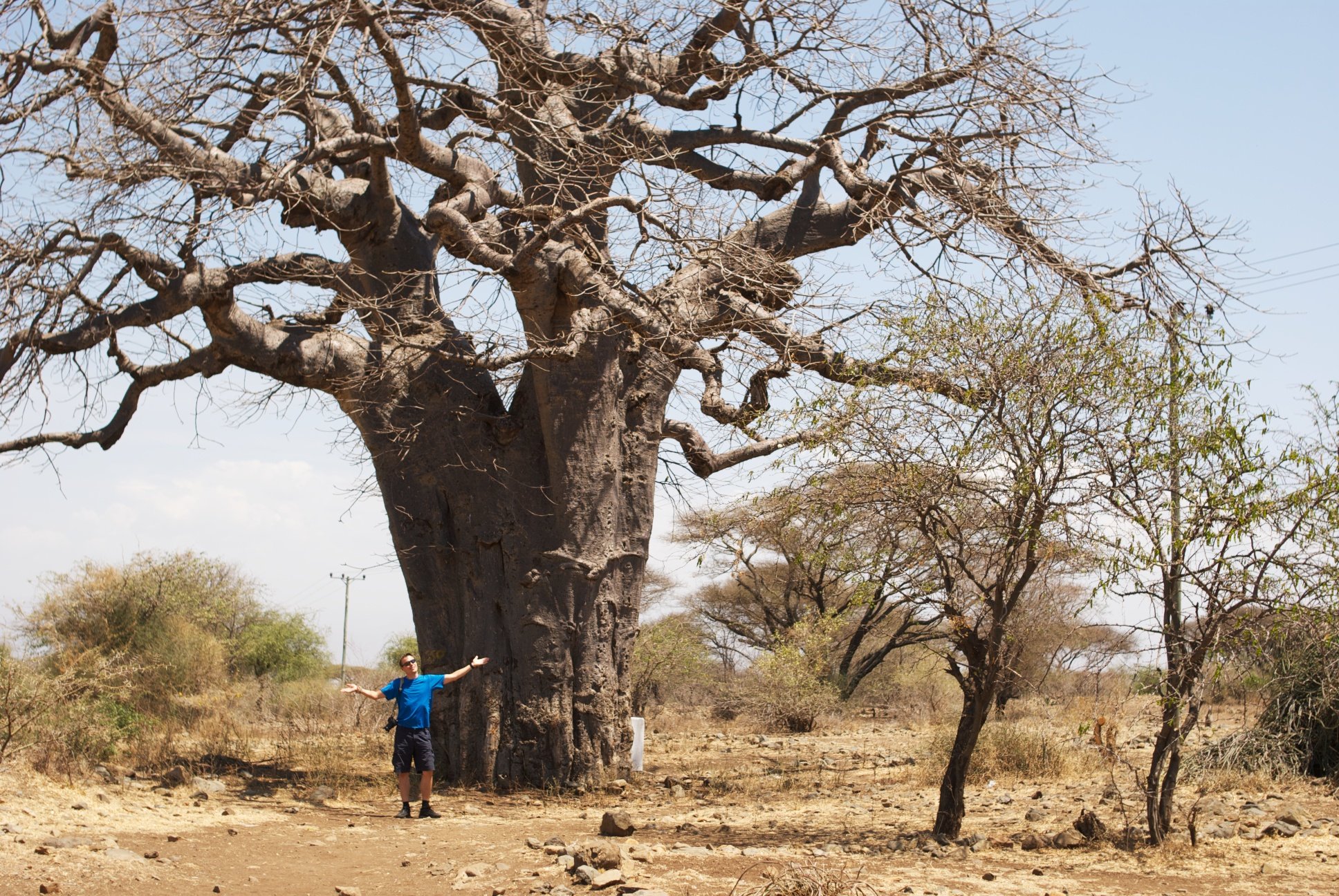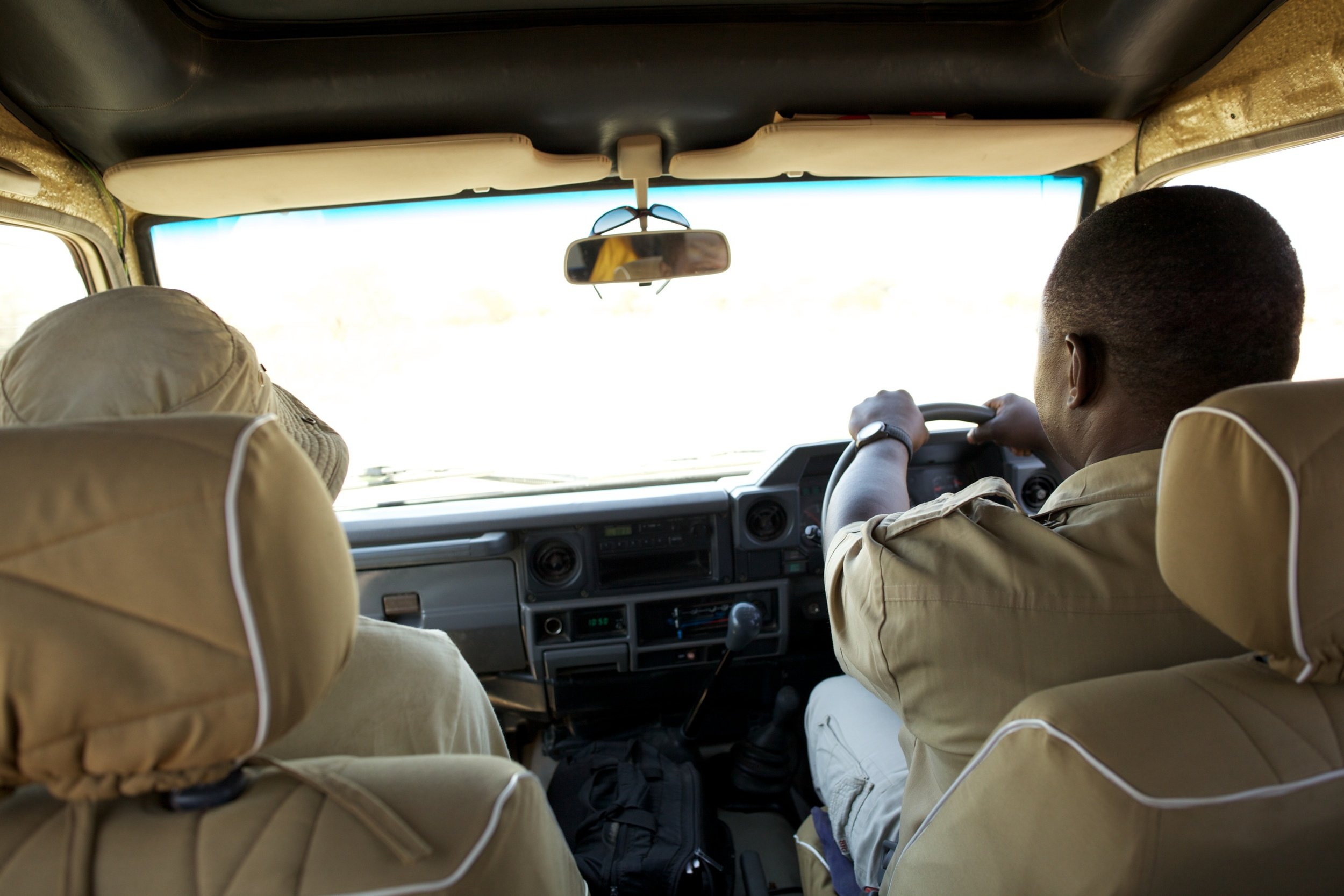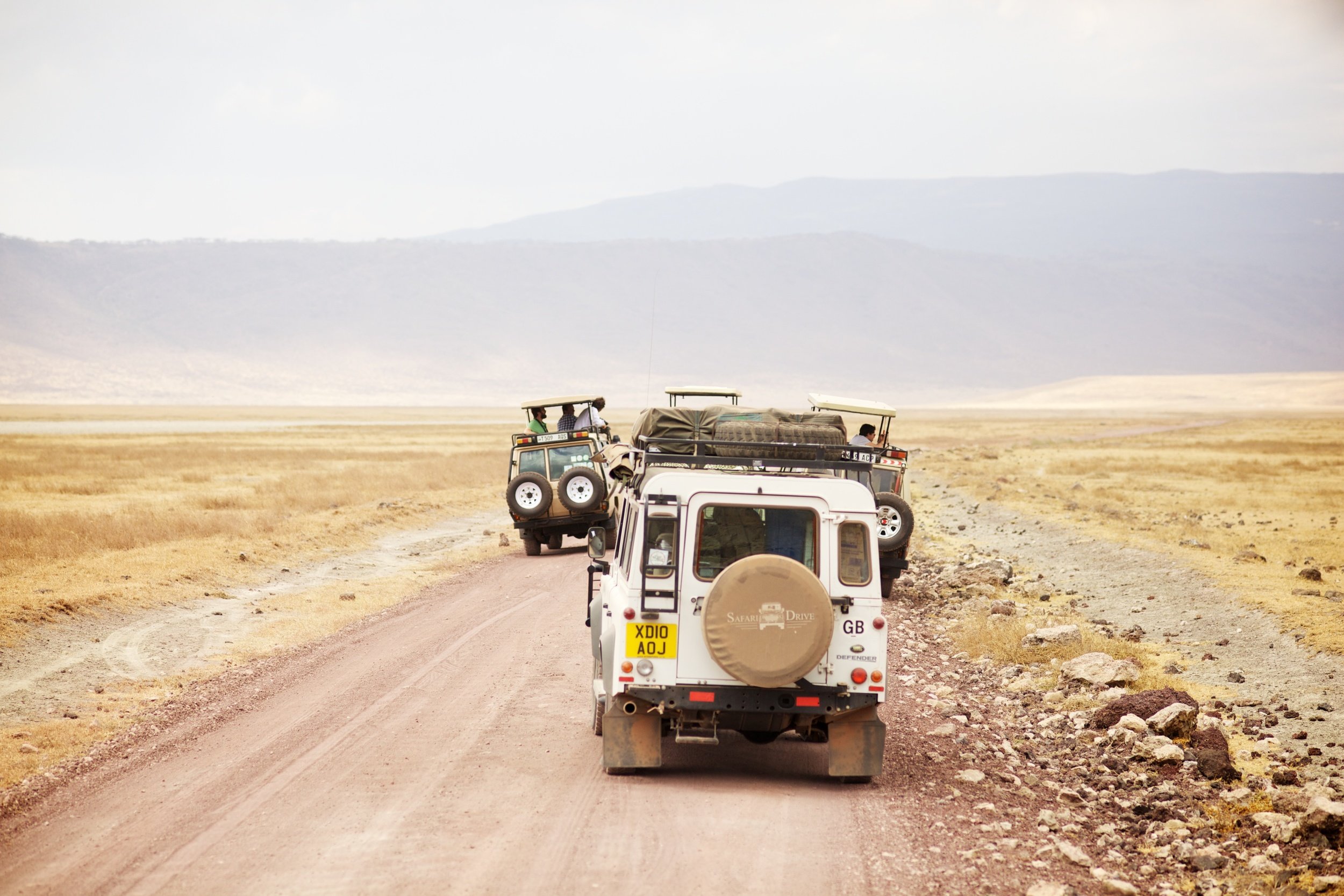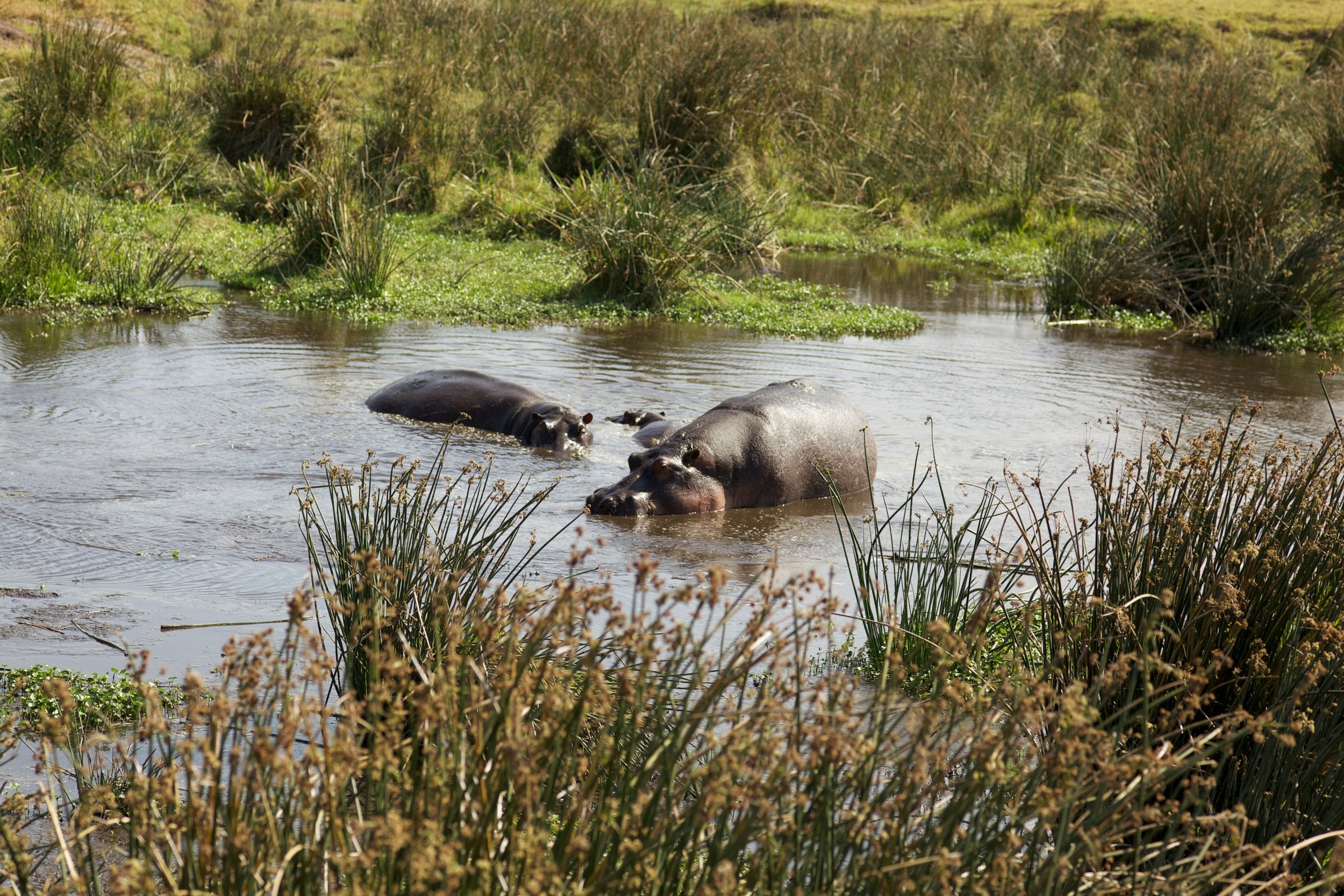First Safari Experience
Geori & Boabab tree on the way to Ngorongoro National Park, Tanzania
How We Got There
One day of rest was not enough for me (Alex). There must be 70-year-olds that are able to move faster than I was moving those days. Took me 2 full minutes to get into the SUV that was waiting for us at 6 am. Steve, the guide, slept overnight in Moshi just so that we could leave early in the morning since we had to stop in Arusha at the company arranging the safari for us before we could actually be on our way. There was nothing special about the road between the two cities or maybe we just got too used to the scenery. The only thing worth mentioning is that Steve was abiding by the Eastern European driving rules namely, the guy with the biggest car has priority in all cases and he gets to decide the rules. One poor guy with a small Nissan Micra coming from the opposite direction did not seem to be aware of these rules and Steve almost drove him off the road.
On the way to Ngorongoro, Tanzania
The road from Arusha to Ngorongoro is actually pretty good, most probably because it is the most popular route and it seems that there are many Chinese investments in the development of the local infrastructure. If you thought that Europeans control Africa, you would be terribly wrong: Americans, Arabs, Indians, and more recently Chinese. They are all there, bringing capital and exploiting the local people... i guess this is the new form of slavery.
Ok..so... the road was nice but the only notable thing was the big baobab three one got to see all over the place.
Once you enter the national park, you feel it immediately. No more asphalt roads and a lot of bumps in the road so impossible to take a nap there. The dust rises high in the air and if you are lucky enough to end up behind another car, it is basically impossible to overtake them as you will not be able to see anything.
Surprising Truth
One funny fact is that although there are many safari companies, all drivers seem to know each other which means it is pretty much a closed circle. Anyway, boring stuff aside, we reached the Ngorongoro conservation area. It is part of an old vulcanic area and the Ngorongoro crater itself is not actually a crater. It used to be a vulcanic mountain that erupted and then collapsed on itself creating a 200 square km protected area. Most of the animals live there their entire lives without taking the chance to go into the wild which lies beyond its borders, in the Serengeti.
Ngorongoro National Park entrance gate, Tanzania
Why We Decided To Visit Ngorongoro
Ngorongoro is basically a safari in itself and it is pretty much the only place where you can get to see at least 4 of the big 5 within one single day. This makes it the most visited safari park and the animals are quite used to the cars. They are not scared and they do not run away. As good as this is for the tourists as they get to see the animals up close (I once got the chance to see lions mating there and I heard it is quite rare for them to do this with humans present), it is bad for the animals since they are not used to the wild anymore thus becoming an easier prey for the ...well... predators.
We got there during the dry season and it seems it was so dry that even the lake that I saw full two years before was now dry. With no water around, the life there was pretty depressing but still, we got to see most of the animals.
The crator of Ngorongoro National Park, Tanzania
Ngorongoro National Park is actually located inside a crator. In fact, it is not a crator per ce. Some milion years a go the mountain that covered that theritory colapsed, and built that crator with about 50km diametor. With the evolution gradually various species of animals start to call that crator home.
Kori Bustard Bird, Ngorongoro National Park, Tanzania
What Animals Are To Spot In Ngorongoro
Depending on the time you go there you will get to see more or fewer wildebeests. As this was the dry season, most of them were migrating towards the Massai Mara in Kenya so not so many left in the Ngorongoro. We got a really good look at the Kori Bustard though, the biggest flying bird in the world.
Exploring Ngorongoro National Park with other visitors, Tanzania
I cannot stress enough how important it is to go at the right time. In 2010, I went there in late August and the place was full of life. In mid-September 2012, the animals were few and far between, most of them hiding from the scorching sun of the dry season. The people in the picture above are looking at a black rhino which was about 1-1.5 km away and you could barely see it with the binoculars.
Hyenas, Ngorongoro National Park
Who Is The King Of Ngorongoro
When conditions are tough, the hyenas are the kings. We witnesses a situation where 3 lionesses caught an antelope and were trying to eat it. A few hyenas spotted the lions and immediately started calling their mates. Within minutes, more than 30 hyenas gathered and they fought the lions away stealing their prey. On one side, they were very united while fighting the lions away but once they beat them they started turning on each other and stealing from each other.
Although I never made the connection in my language between zebras and donkeys, it seems that other cultures see them as quite close animals. For example, in Swahili donkey is milia while zebra is “pundamilia” which means striped donkey.
It is impossible to put into words the beauty of the wildlife we got to see there. It is important to mention that the ecosystem is self-sustaining and park rangers do not get involved in feeding or protecting the animals so it is a perfect chance to see animals as they normally behave.
For us Ngorongoro was the extra part of the safari as we wanted to focus on the Serengeti but if you only have a couple of days after climbing Kilimanjaro or if you are there on business, Ngorongoro is the perfect safari for the ones on the run. We would advise you to do it in the rainy season but for someone who did not experience wildlife even the dry season is out of this world.
If you have the time, take a night to sleep in the camps located in the national parks. You can choose one of the luxurious lounges that are no less impressive than what you would expect to find in the Swiss Alps for example or go to the tent camps and get a chance to be visited by an elephant. This actually happened to us as we were going for the Ngorongoro tented campsite. The elephants knew that they can find water there and they came to drink from the water pipes that were supplying the camp. You won't get many chances in your life to get so close to an elephant in the wild. Zebras might also come and sleep near your tent at night hoping that the predators will try to avoid humans and thus avoid hunting zebras that are too close to humans.
All in all, it is something you have to do and even though the roads are bad you do not necessarily need a big SUV... we actually got to see a few Toyota RAV4s around there.
Thus ended the first day on the safari. Not with an overexcited feeling of what we saw but hoping that the Serengeti would be better... it had to be better... the rain was going that way... so the wildlife had to move that way...
















